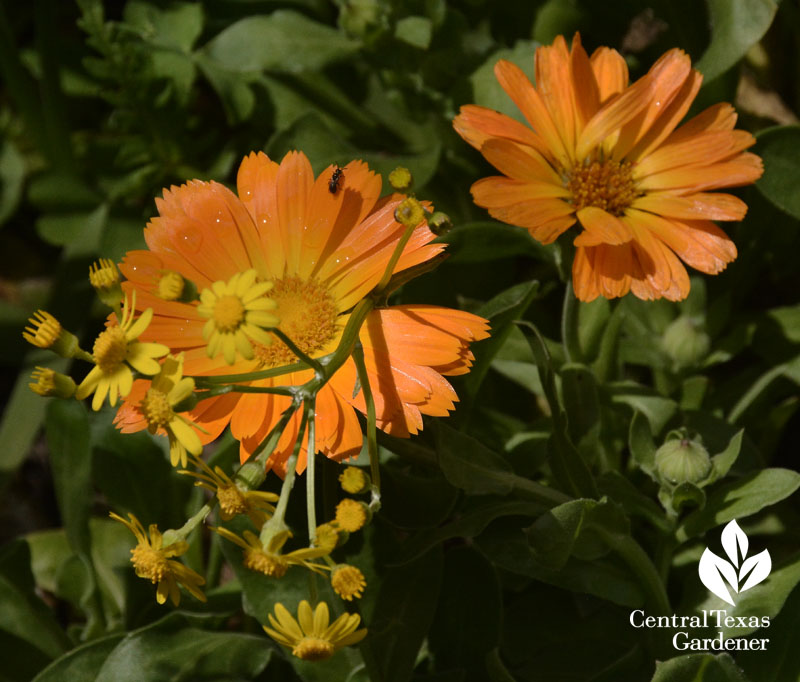March 26, 2015
Out Like A Lamb, Sort Of
What a crazy ride this March has been! And it’s not over yet, since we’re sweating on Wednesday and “shivering” on Thursday. Calendula and golden groundsel (Packera obovata) handle it well. Some tiny beneficial pollinator was having lunch until I interfered.

Here’s a wider shot of the golden groundsel along the back fence.

Everything is shooting up as fast as the thermometer. After mickey mousing around for weeks, suddenly Narcissus Marieke zoomed up in a few days. Sunday morning, it popped.

Three hours later. . .

It’s a cheery sight even from inside at the front window.

In back, Narcissus Las Vegas was just as startling in its fast upshoot. That’s native geranium (Geranium carolinianum) around it.

N. Tete-a-Tete slowly wandered in and then, bang! That’s a lot of bouncing bet and asters alongside.

Now, I can’t tell you why I’ve lost Freesia laxa in other spots in my garden. For some reason, it likes this super shady spot until afternoon sun hits briefly.

Native annual baby blue-eyes gladly seed themselves here.

Okay, just ONE more mountain laurel picture, since mine have never bloomed like this before! I couldn’t resist this shot with a bee loaded down with pollen.

I’m not a very patient person. But when it came to my 1893 Crimson King bearded irises, I didn’t mind waiting 3 years for their fragrant glamour.

A little more purple (and pink) with oxalis next to brand new ‘Moonshine’ yarrow. Love that silver!

It didn’t take long for my passalong matchstick bromeliad (Aechmea gamosepala) to bloom, though it was later than usual this year.

Annual false dayflower (Tinantia anomala) is sort of bullying this bed. I’m pulling out bunches but keeping enough for their charming little flowers.

It took me a few tries to come up with the right place for Gladiolus tristus, but it’s made a return performance for two years. Joined by yarrow and bearded iris in this shot, it gets morning sun, followed by shade, and then a short blast of afternoon light.


The “weeds” are shooting up, too. Since I get lots of questions about this one that I call “false carrot,” here’s the word from Scooter Cheatham at Useful Wild Plants. “It’s Torilis arvensis (hedge parsley, beggars lice, and other unsavory names). The leaves, when young, make an acceptable parsley substitute (and the root can be used to make a ‘carrot-like soup’).”

This week, we repeat our America’s Test Kitchen program with the Bernsen family garden in La Grange. Next week,we launch all new programs, starting with tips on growing lavender and a trip to Temple for an outstanding garden.
Thanks for stopping by! See you next week, Linda
tags:

